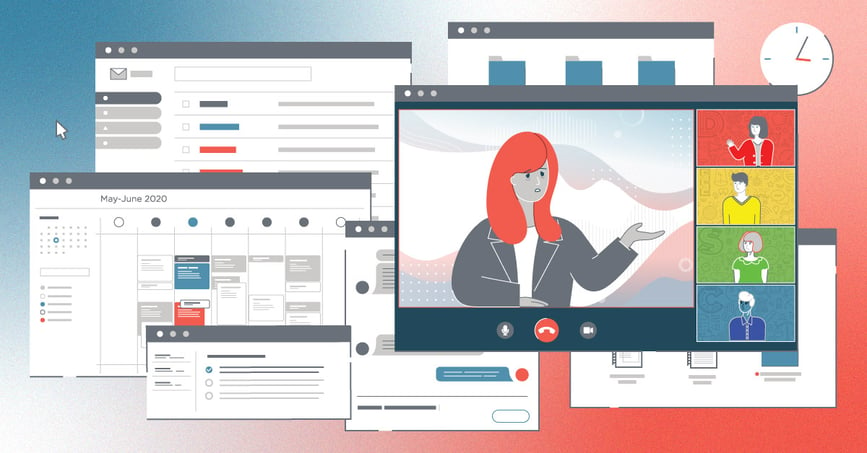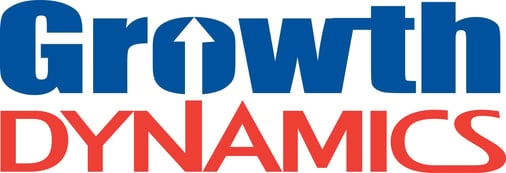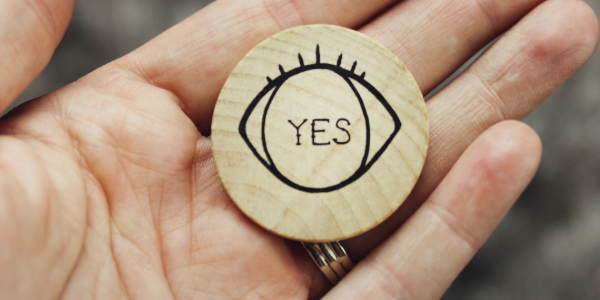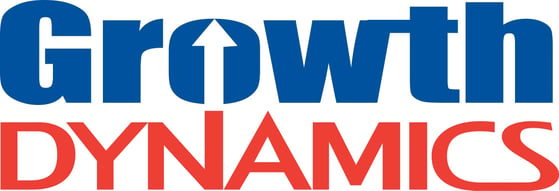The last few months have certainly been interesting. Charlie and I have seen ourselves thrive in some aspects, but also face a little burnout in others. We think the same can be said for many of the people we interact with regularly.
For some, all of this computer time is a brand new world and might be making you feel stressed or perhaps caged into one location. Others love the ability to work from home and not spend so much time behind a wheel, but find balancing that work/life balance while being at home more.
When the article from our communication assessment partner TTISI come through I thought it was worth sharing. Unsure of your communication style? Contact me to learn more about finding out your communication style.

It’s a well known fact that many workers want the ability to work remotely. In 2019, 71% of workers said they would quit their jobs if another employer offered them flexible scheduling, according to ExecuSearch. Still, some businesses hesitated to pursue this option for fear of change and less productivity.
Now that the COVID-19 pandemic forced a majority of the workforce into quarantine, many businesses are seeing that working remotely saves time, money and resources. Many are deciding to stay remote permanently, even after the health threat subsides.
Working from home has plenty of benefits in the right circumstances, but it also has the potential to accelerate burnout in every behavioral style. Burnout was a common problem in the workplace before the pandemic; one study from 2018 reported that almost 40 percent of workers surveyed were ready to quit their jobs because of burnout.
That risk has only increased in current times; add on the economic difficulties, stress about health, and strain of social distancing, and then completely flip the day-to-day schedule by changing to remote work. You have the perfect recipe for burnout in 2020.
Don’t panic yet! The good news is that by focusing on the factors you can control, you will be able to improve your working environment and day-to-day experiences. Get ahead of burnout while working remotely by watching for these warning signs, for each behavioral style.
Direct Communicators (High D): Pushing Yourself Past Your Breaking Point
![]() Direct communicators are known for their fast pace, task oriented work style, and ability to churn and burn. This fast pace is great for achieving tasks and setting goals, but it will eventually overwhelm you and your team without awareness in place.
Direct communicators are known for their fast pace, task oriented work style, and ability to churn and burn. This fast pace is great for achieving tasks and setting goals, but it will eventually overwhelm you and your team without awareness in place.
“I think Ds may be prone to not taking breaks, just powering through. They also may have such a sense of urgency that if they check emails when they are ‘off the clock’ they are likely to respond and start working right then,” said Favor Larson, a senior Business Development Consultant who herself has a 100 percent D score. “They may also possibly neglect the social side of work, since they are not in the office. They no longer have those ‘accidental’ run-ins with people, so they now may find their relationships fall to the side. They should be aware that they may end up feeling disconnected if they do not proactively reach out to connect socially.”
Solution: Tune In, but Log Off!
Pacing yourself might be harder than ever, but you need to slow down. Do this by scheduling breaks into your work day, reaching out to your team members to connect, and setting hard stops on your day.
Don’t let yourself work past your regular sign off! If this is frustrating, just remember these boundaries are ensuring you can take care of yourself, your work, and your team. Keep that perspective in mind.
Reflective Communicators (Low D): Avoiding Conflict Creates Conflict
![]() Reflective communicators are cooperative, lowkey and modest. In the best of times, they avoid confrontation and conflict, so right now, they are particularly challenged to speak up. The addition of more communication tools like instant messaging open up another avenue of misunderstanding, since conflict or disagreement can feel very personal to reflective communicators.
Reflective communicators are cooperative, lowkey and modest. In the best of times, they avoid confrontation and conflict, so right now, they are particularly challenged to speak up. The addition of more communication tools like instant messaging open up another avenue of misunderstanding, since conflict or disagreement can feel very personal to reflective communicators.
Working from home makes initial conflict easy to avoid due to email and the lack of in-person communication, but that avoidance will cause problems down the road. Reflective people also might not feel heard in a virtual environment, and this disconnect will prevent helpful feedback.
Solution: Get Some Clarity
Reflective people need to speak up for themselves to prevent burnout. By taking that proactive first step, they can set up a better foundation of interaction.
They can do this by having important conversations ‘in person’ as much as possible to avoid misunderstanding. Don’t be afraid to ask for further clarification at the end of the meeting— don’t let it end without getting the next step confirmed. Over-communication right now is ideal.
If you’re a low D and want some tips about active listening and communication, check out our infographic.
Another important part of staving off burnout for reflective communicators is to give themselves a break! Much of the conflict they are struggling with is likely imagined or exaggerated by their own anxieties. Being a little more direct will help this issue immensely, but low Ds need to make sure they aren’t too hard on themselves.
Outgoing Communicators (High I): No People = No Productivity
![]() Outgoing communicators are energetic, enthusiastic, and conversational. It might be easiest to understand why these people are having a hard time right now, since they thrive on interaction and relationships. The loss of water-cooler chat in the office combined with social distancing and no public connection are hitting them hard.
Outgoing communicators are energetic, enthusiastic, and conversational. It might be easiest to understand why these people are having a hard time right now, since they thrive on interaction and relationships. The loss of water-cooler chat in the office combined with social distancing and no public connection are hitting them hard.
High Is are also agile and tend to jump between projects, but this distractibility is an issue while working from home, since kids, pets, household tasks, and everything else you can think of are competing for their attention.
Solution: Work Hard, Then Play Hard
Outgoing communicators need to hold themselves to high standards and a strict schedule. The Pomodoro method is a great strategy to utilize; high concentrated bursts of productivity followed by small breaks keep high Is interested and engaged. If you’re a high I, make sure to schedule time with coworkers, friends and family to check in and get the face to face contact you crave, even if it’s on a Zoom call. Utilize video chat whenever possible to stay connected.
Remember, the greatest strength of Outgoing communicators is their ability to connect with others and engage them! Their presence on your team will help everyone stay connected.
Reserved Communicators (Low I): Distancing is Too Easy
![]() Reserved communicators are controlled, reflective, and restrained. Social distancing is right in their comfort zone, and they’re most likely to be thriving right now working from home.
Reserved communicators are controlled, reflective, and restrained. Social distancing is right in their comfort zone, and they’re most likely to be thriving right now working from home.
However, their comfort zone isn’t always a good thing! Low Is tend to withdraw into themselves, and without the regular schedule and enforced interaction of working together in the office, they might withdraw too far. This will cause miscommunication and disconnect from the team at large. Even though they’re comfortable with low levels of interaction, they still need some or they will burn out.
Solution: Stay Synced Up
If low Is are not up for lots of video calls and conferencing, luckily they have different options for communication while working remotely. Stay connected over an app like Slack, Mattermost, or G Chat with the team. This gives them some needed distance while still remaining available.
Reserved communicators need to push themselves to share more in meetings and in conversation. This will help their team stay connected and help them avoid turning too far inward. It will also help avoid miscommunication down the road.
Predictable Communicators (High S): Fast Pace Means Misery
![]() Predictable communicators are patient, reliable, and steady. They thrive with routine and a slower pace, so they are understandably struggling right now, as their work environment is turned upside down. They are feeling obligated to speed up their pace to remain agile and flexible, but that overextension will exhaust them in the long term.
Predictable communicators are patient, reliable, and steady. They thrive with routine and a slower pace, so they are understandably struggling right now, as their work environment is turned upside down. They are feeling obligated to speed up their pace to remain agile and flexible, but that overextension will exhaust them in the long term.
Solution: Talk it Out
Communication is their not-so-secret weapon against burnout. By reinforcing clear objectives and sharing their questions, high Ss can make sure they are on the same page as their team. Predictable communicators can’t be afraid to share what they’re working on as well; by documenting both deadlines and achievements, they will bolster your confidence in themselves and reestablish a sense of completion when it comes to projects.
Dynamic Communicator (Low S): Too Many Tools
![]() Dynamic communicators are active, flexible and fast moving. They are well positioned to handle our current situation, since their ability to refocus and shift their attention is well developed. When burnout hits, however, this ability overextends and turns into distractibility and a lack of concentration.
Dynamic communicators are active, flexible and fast moving. They are well positioned to handle our current situation, since their ability to refocus and shift their attention is well developed. When burnout hits, however, this ability overextends and turns into distractibility and a lack of concentration.
The influx of communication options is one of the reasons why this is such a problem— when Zoom, chat, email and phone calls are all firing off all day, the ability to focus and get work done falls to the wayside.
They can also get frustrated with other team members for not adjusting as quickly as they are, which breaks down communication. If a low S is not communicating their needs or expectations before pivoting, their frustration with their team will lower morale and result in burnout.
Solution: Narrow the Scope
Dynamic communicators need to figure out what tools work best for them and their team, and then move on— the latest update likely won’t make their job easier overall. Dynamic communicators also need to recognize that working from home isn’t a sprint; it’s a marathon. Leaning into the steadiness of the S behavioral trait will help them slow down and be thorough.
Compliant Communicator (High C): Broken Focus Means Burnout
![]() Compliant communicators are neat, conservative, and careful. They are at high risk of working through the day nonstop, without taking breaks or catching their breath. This rapid pace and internal pressure means worse concentration over time and increased anxiety.
Compliant communicators are neat, conservative, and careful. They are at high risk of working through the day nonstop, without taking breaks or catching their breath. This rapid pace and internal pressure means worse concentration over time and increased anxiety.
Another contributing factor is the number of disruptions that derail High Cs. “I burnout over the number of video calls held during the day, whether scheduled or impromptu,” shared Carol Mettenbrink, one of our Senior Business Development Consultants. “They take time away from my ability to stay focused on project work. I’m also constantly doing research to make sure I am ‘up’ on the latest information of how the pandemic is progressing and trying to make sense of it all.”
Solution: Take Breaks and Set Boundaries
Compliant communicators need to set boundaries during the day and reconnect later. It’s ok to say no to a call if they are in the middle of something! In the office, they likely were comfortable asking for a later conversation if someone popped in and interrupted them; doing the same thing over chat is perfectly acceptable.
High Cs tend to be strict in their expectations of themselves and others; so they need to turn that strictness towards respecting boundaries with themselves. Schedule in time to take breaks and honor that schedule.
Pioneering Communicators (Low C): Too Ready to Roll
![]() Pioneering communicators are uninhibited, independent, and instinctive. Their visionary thinking and free flowing work style are great for the big picture, but can be difficult in practice while working remotely.
Pioneering communicators are uninhibited, independent, and instinctive. Their visionary thinking and free flowing work style are great for the big picture, but can be difficult in practice while working remotely.
Low Cs don’t like slowing down— they want to keep moving to the next project or process. This will cause fatigue while working from home because this willingness to jump around on projects results in unfinished work and more work in the long run.
Solution: Pace Yourself
Pioneering communicators need to be patient with themselves and others in this time. Their ability to pivot and focus on the future is crucial for the team’s success, but that can’t come at the cost of the rest of their schedule. They should work on completing tasks and waiting for all of the information they need.
The number one thing each behavioral style can do to avoid burnout is focus on increasing communication.
Beat Burnout and Thrive
The number one thing each behavioral style can do to avoid burnout is focus on increasing communication. What exactly that communication looks like in best practice will be dictated by your DISC results, but the baseline is clear; right now, connection is more important than ever.
If you want to find out what your behavioral style is, take the Working From Home Report! This quick, free assessment will give you personalized insight into your communication style and custom tips while you work remotely.
What are your best practices for avoiding burnout? Do you have any tips for your behavioral style? Connect with us on social media and share your experience; we want to hear from you.







